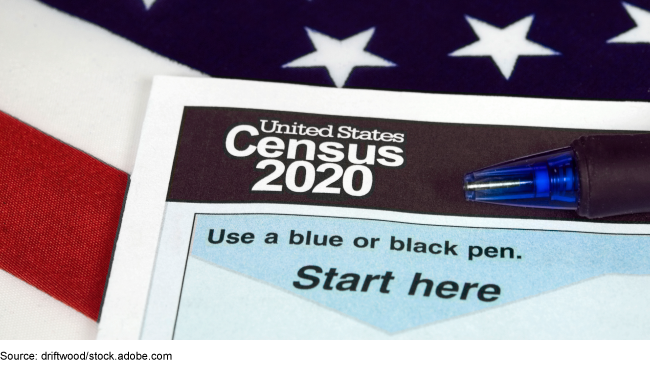2020 Census: The Bureau Adapted Approaches for Addressing Unexpected Results and Developing Annual Population Estimates
Fast Facts
The 2020 Census was conducted during the COVID-19 pandemic, so the Census Bureau had to revise some of its data collection activities. This may have led to some unexpected census results.
State, local, and tribal governments can challenge some of those results. For example, the Bureau received 74 cases challenging population counts of group quarters—e.g., university housing. The Bureau also received 123 cases challenging housing units' locations or whether valid housing units were inadvertently excluded from the census.
Corrections made due to these challenges are incorporated into the base estimate used for future annual population estimates.

Highlights
What GAO Found
The Post-Census Group Quarters Review program was a one-time program created for the 2020 Census to address unexpected results in enumerating group quarters populations due to COVID-19. Group quarters are places where people live or stay in a group living arrangement, such as university housing. If a state, local, or tribal government (governmental unit) believed the population at a group quarter was not properly counted, it could submit a case to the Census Bureau. Of the 74 cases submitted, the Bureau approved requests, in whole or in part, for 54 cases. Since 1990, the Count Question Resolution program has allowed governmental units to challenge the location of housing units or whether a valid housing unit and its population was inadvertently excluded from the census. The figure below shows that the Bureau received 123 such cases related to the 2020 Census compared to 239 cases in 2010. Bureau officials partially attribute this decrease in case submissions to more accurate data collection using electronic software instead of paper. Of the 123 cases submitted, 104 were accepted for review, of which 29 resulted in the movement of housing units (e.g., house on wrong street), but there was no change to the population counts. Cases not accepted were determined by the Bureau to be out of scope of the program or incomplete.
2010 and 2020 Census Count Question Resolution Case Outcomes

Between decennial censuses, the Bureau develops annual population estimates, which are official measures of population and housing units. Following the 2020 Census, the Bureau modified its methodology for developing estimates, in part, because of challenges created by the pandemic. Historically, the base for the annual population estimate was the latest decennial census. The Bureau is now using a “blended” population base that, in addition to 2020 Census data, relies on other sources of data, such as demographic analysis. Census stakeholders GAO spoke to support this new methodology. Population changes found through the Post-Census Group Quarters Review and Count Question Resolution programs are also included in the annual population estimates.
Why GAO Did This Study
Each decennial census is a complex and costly undertaking. The 2020 Census occurred under extraordinary circumstances due to the COVID-19 pandemic. For example, the 2020 Census experienced delays that, in some cases, required the Bureau to revise data collection activities. GAO has previously reported on quality concerns that were prompted by late design changes to the 2020 Census.
GAO was asked to report on significant operational issues from the 2020 Census. This report describes (1) what the Bureau is doing to address unexpected 2020 Census results that were identified through reviews submitted by governmental units; and (2) how the Bureau changed its methodology for developing annual population estimates compared to prior decennial censuses.
GAO examined Bureau guidance for the 2010 and 2020 programs of unexpected census results, and Bureau methodology for developing annual population estimates. Bureau officials provided GAO a detailed explanation of 2020 reviews for several cases. GAO also interviewed Bureau officials and census stakeholders from the Federal-State Cooperative for Population Estimates and the National Academies of Sciences, Engineering, and Medicine.
GAO provided a draft of this report to the Department of Commerce for its review. The Bureau provided technical comments, which GAO incorporated, as appropriate.
For more information, contact Yvonne D. Jones at (202) 512-6806 or jonesy@gao.gov.
